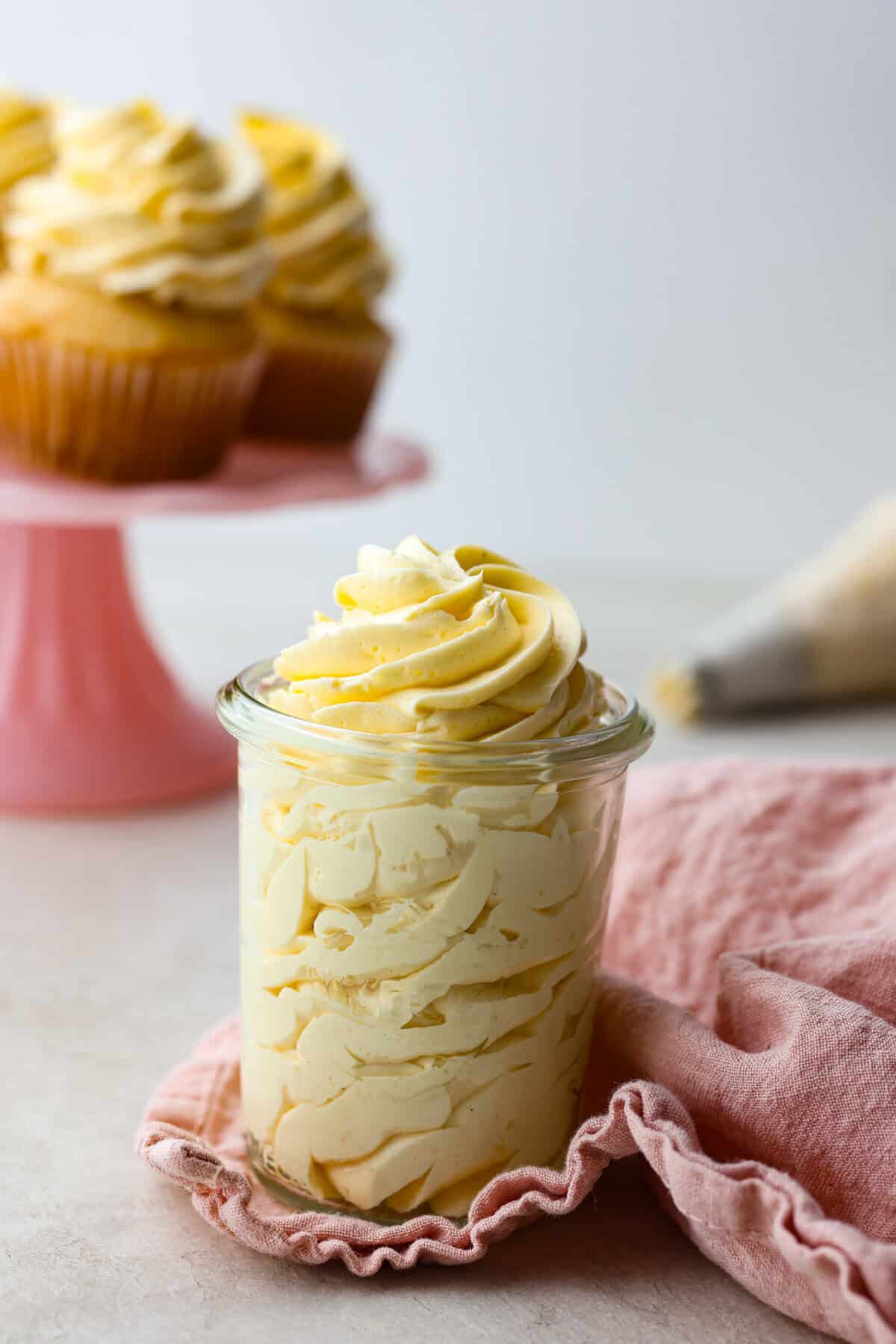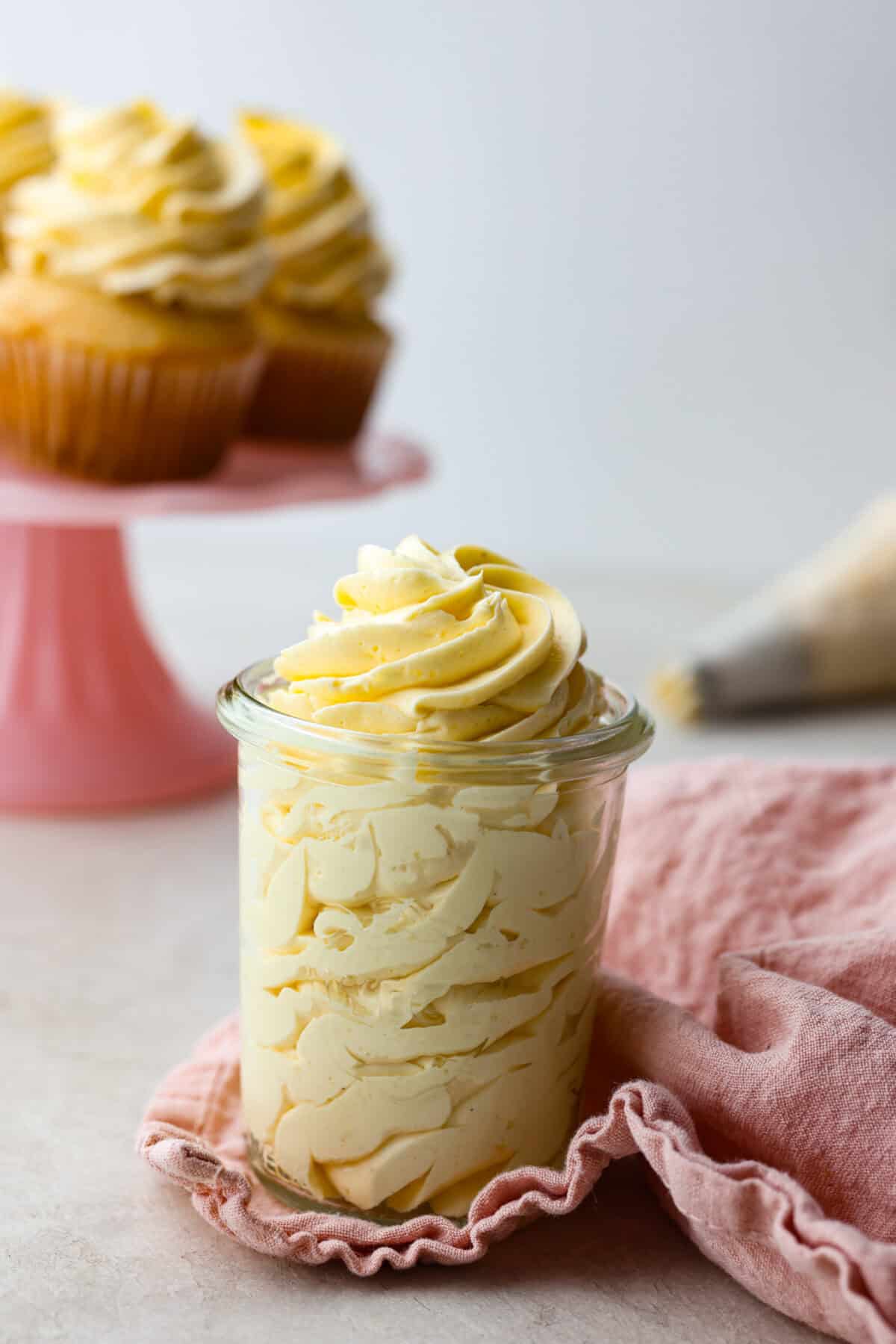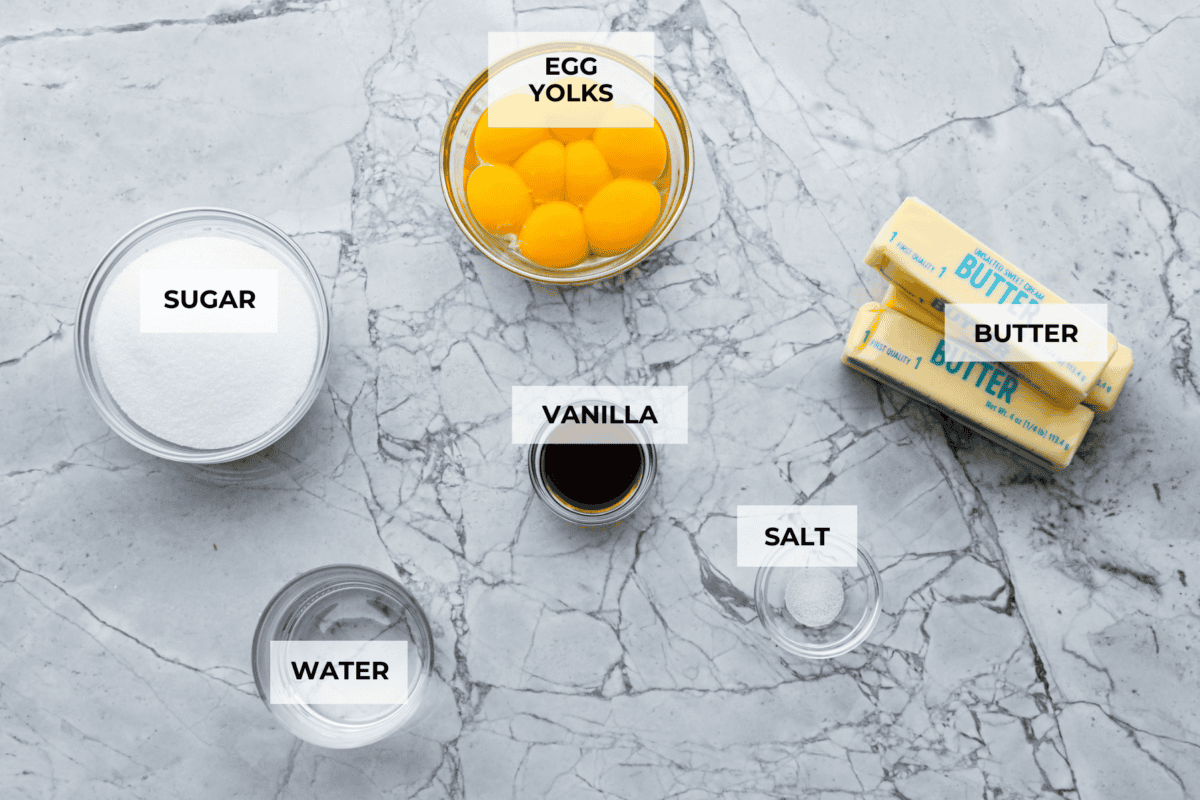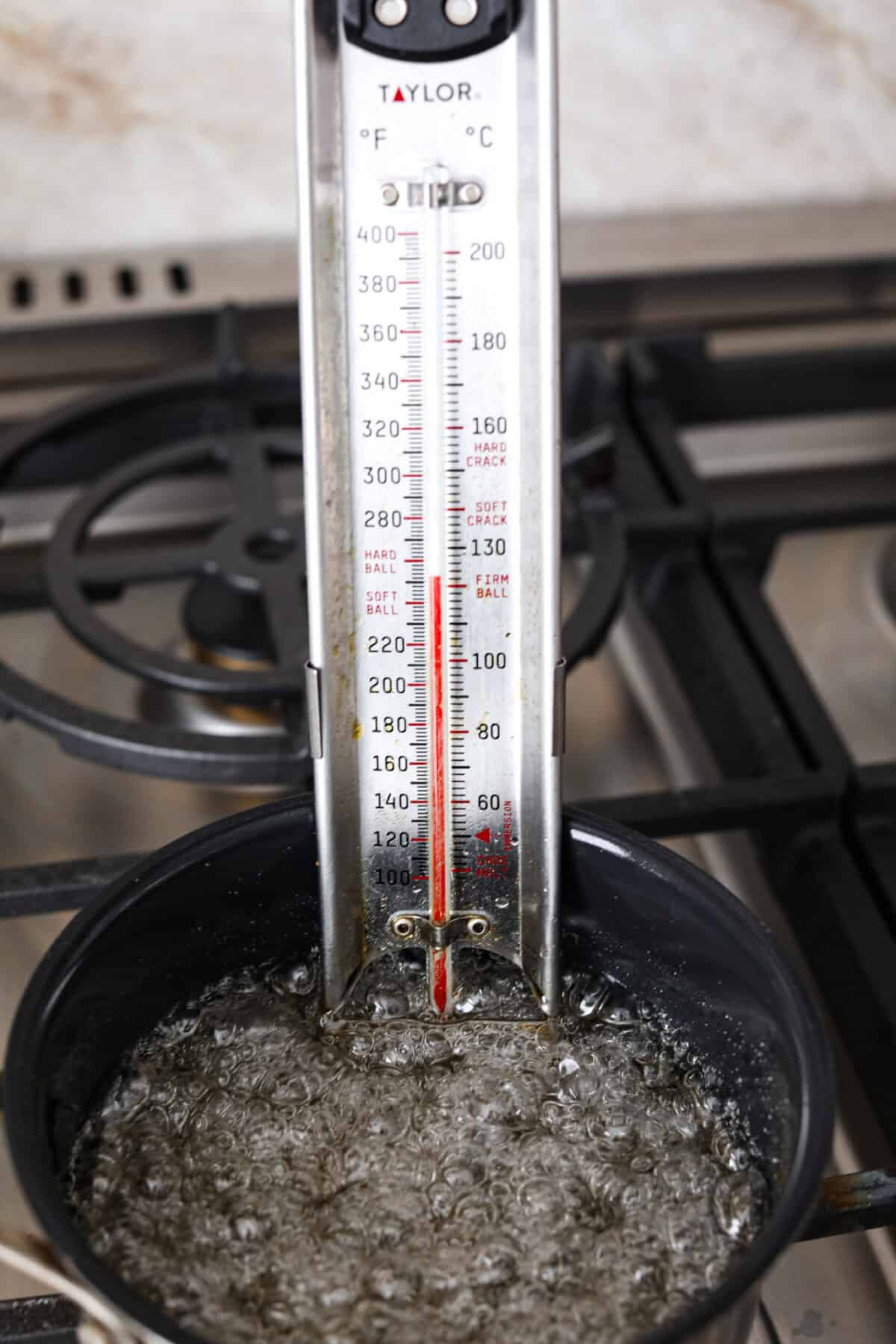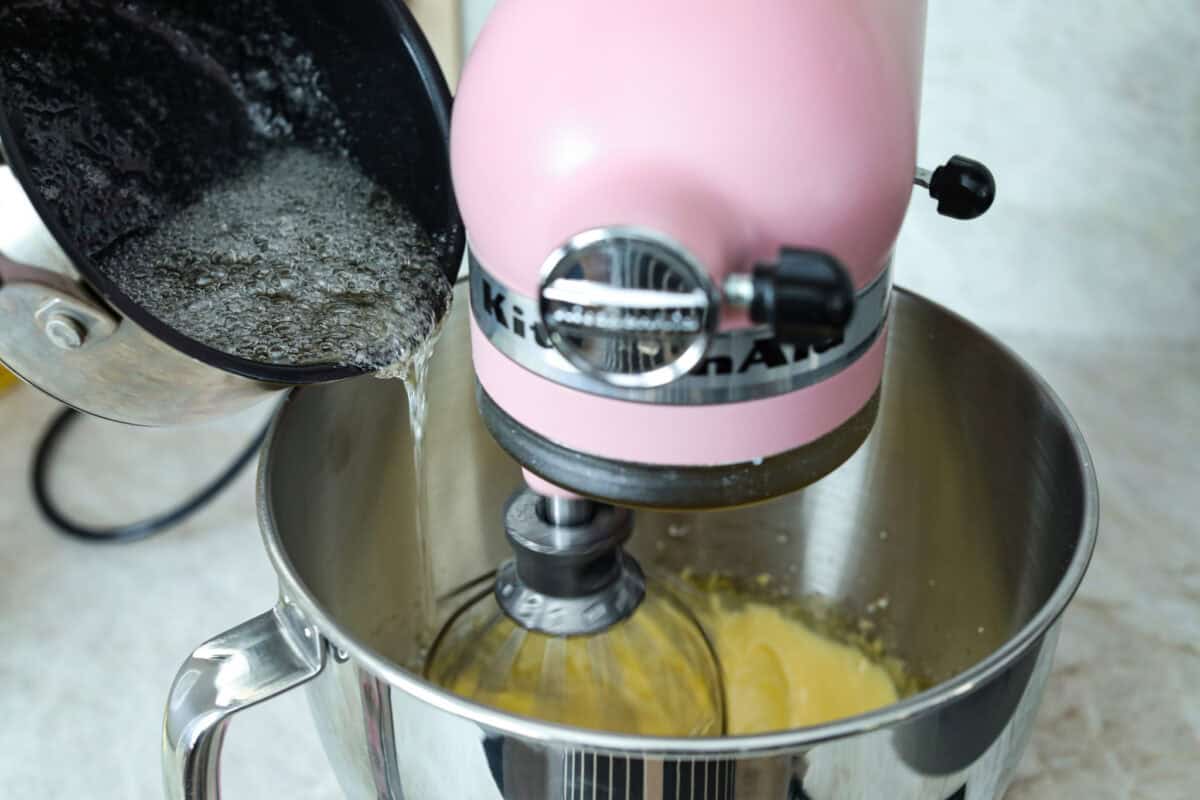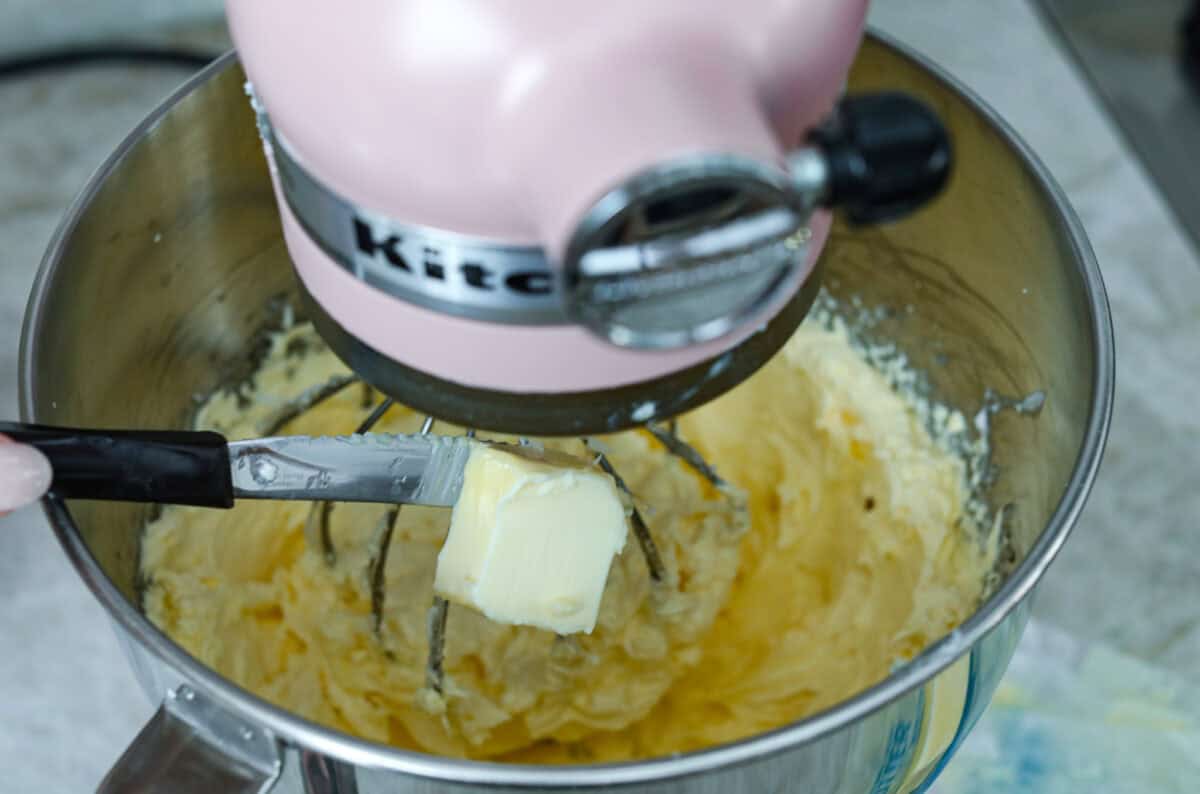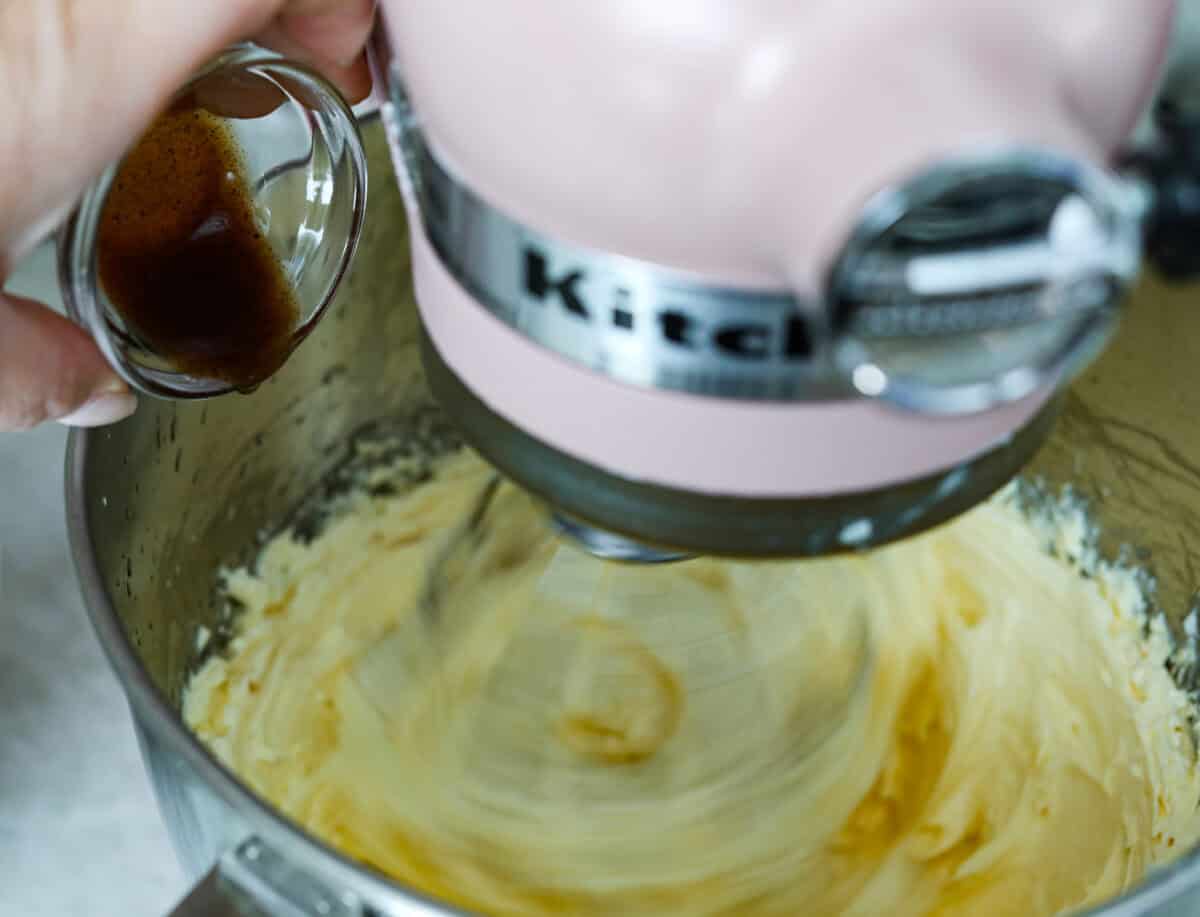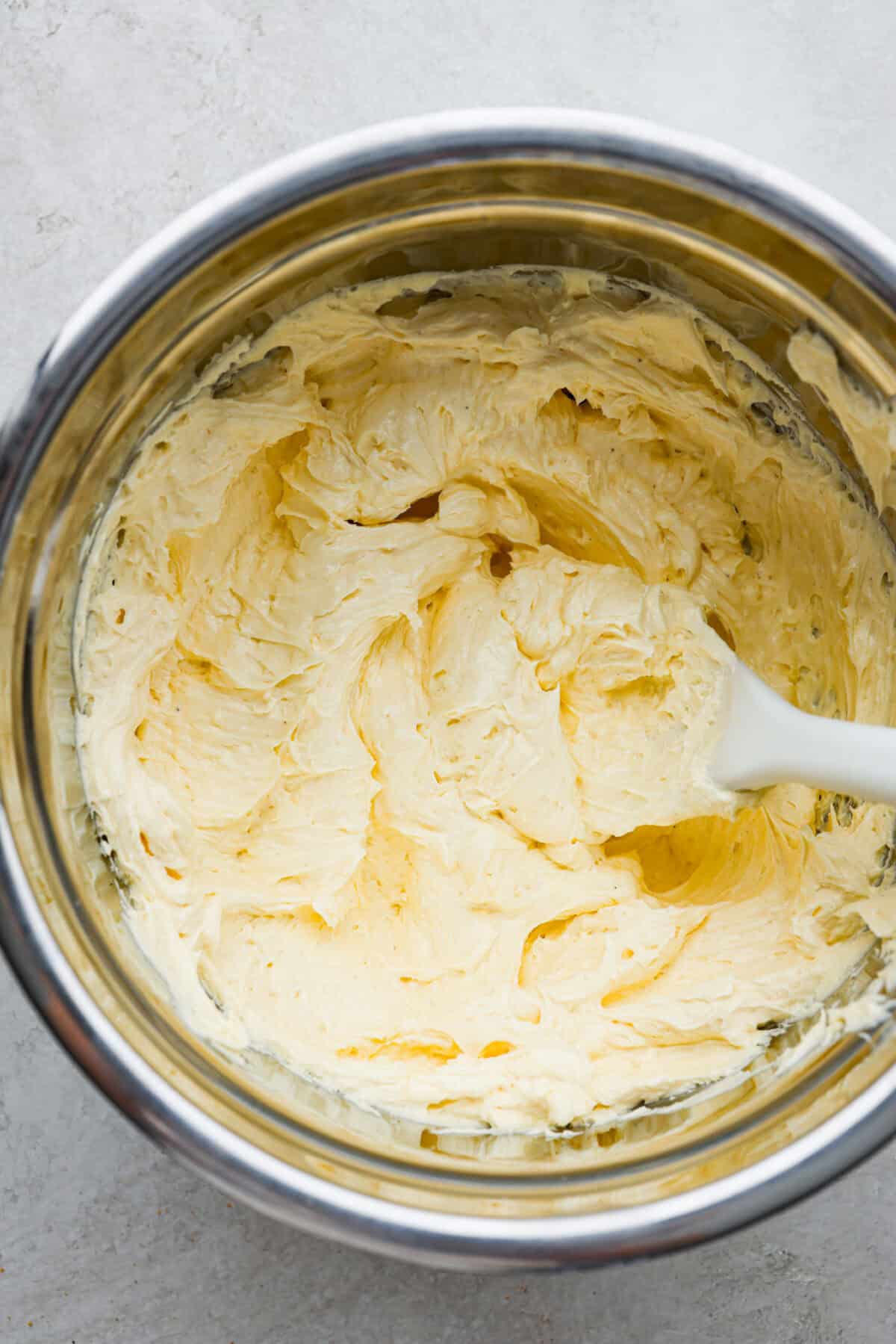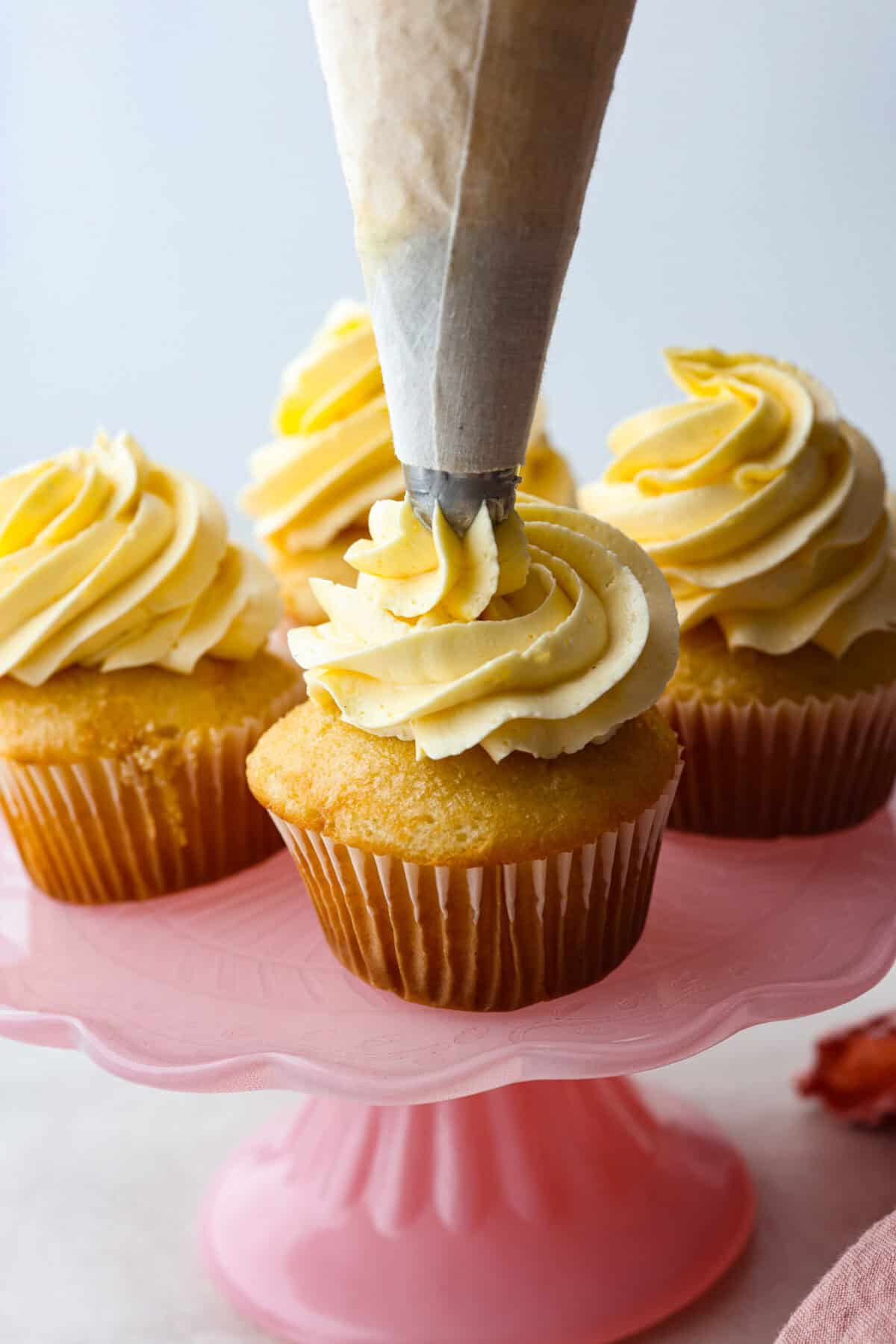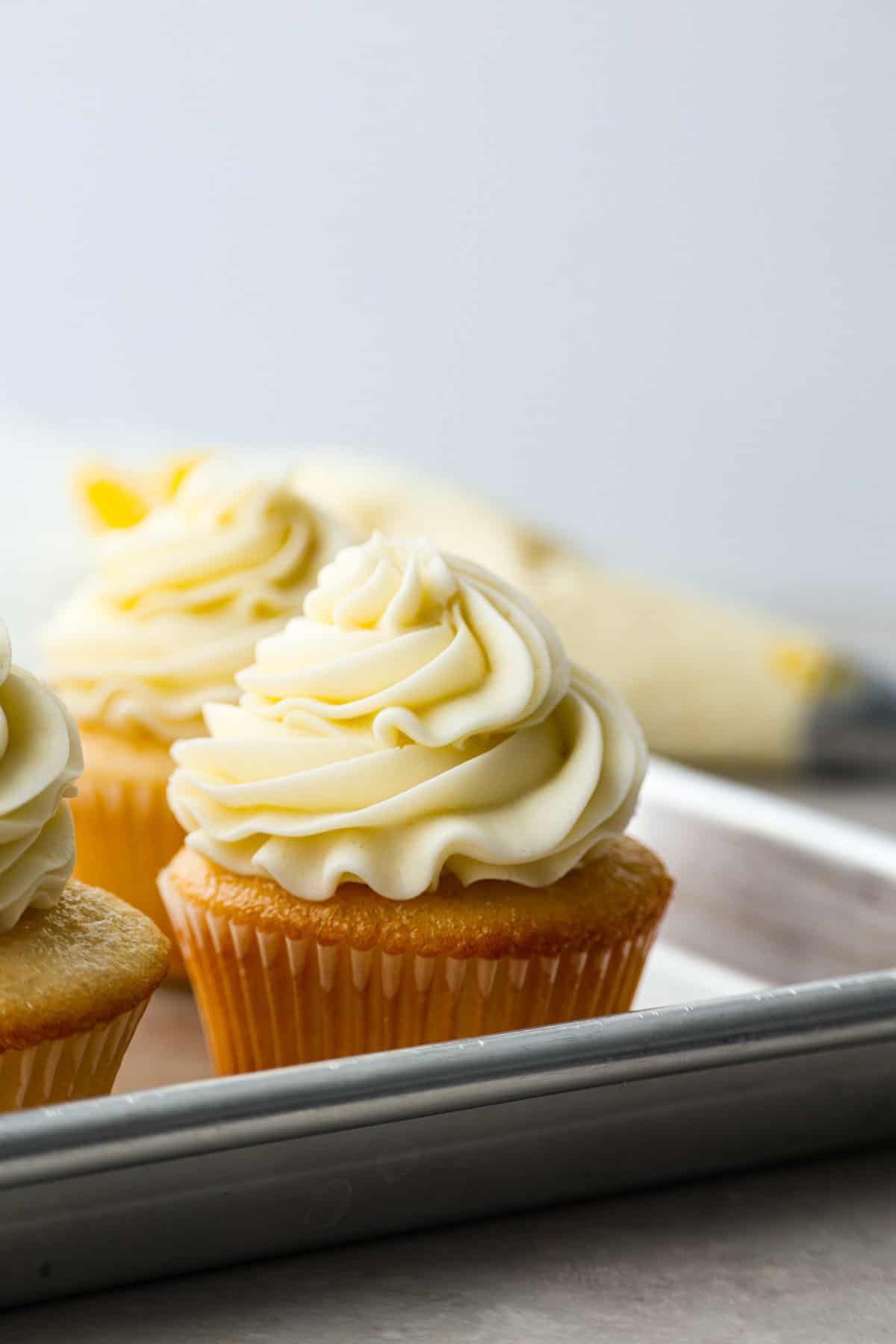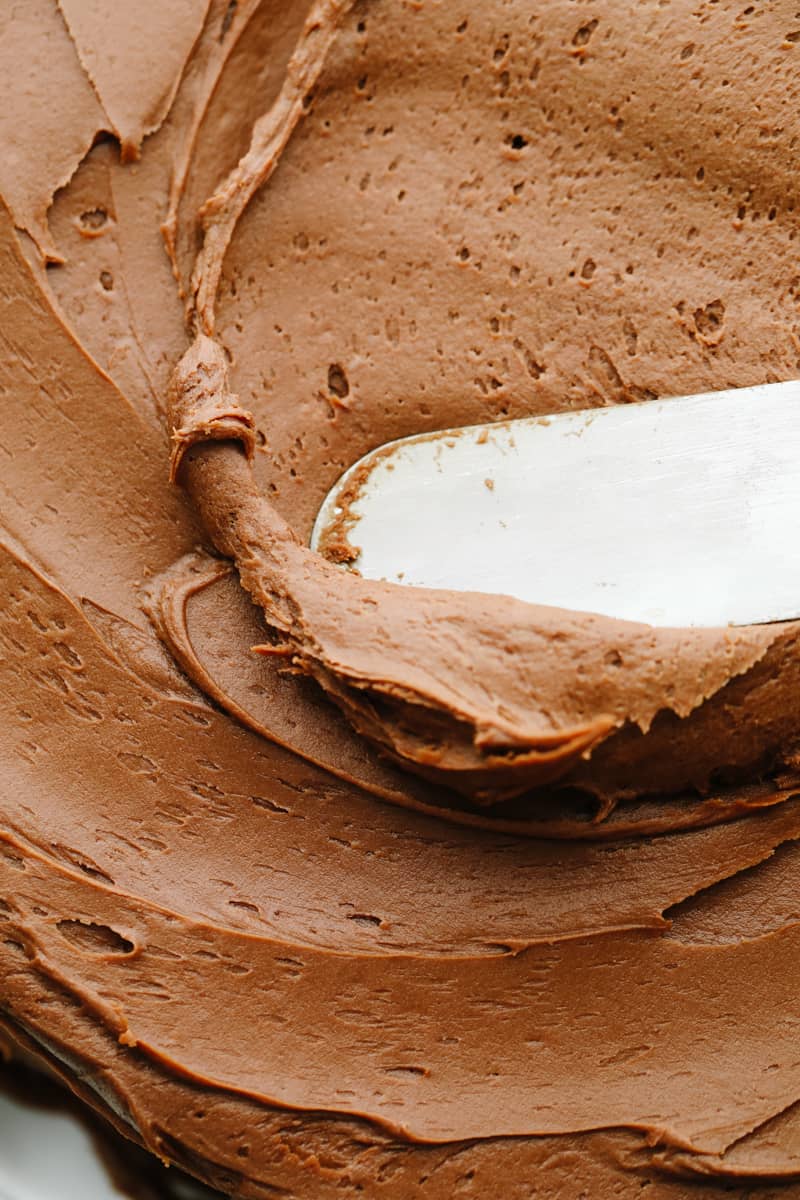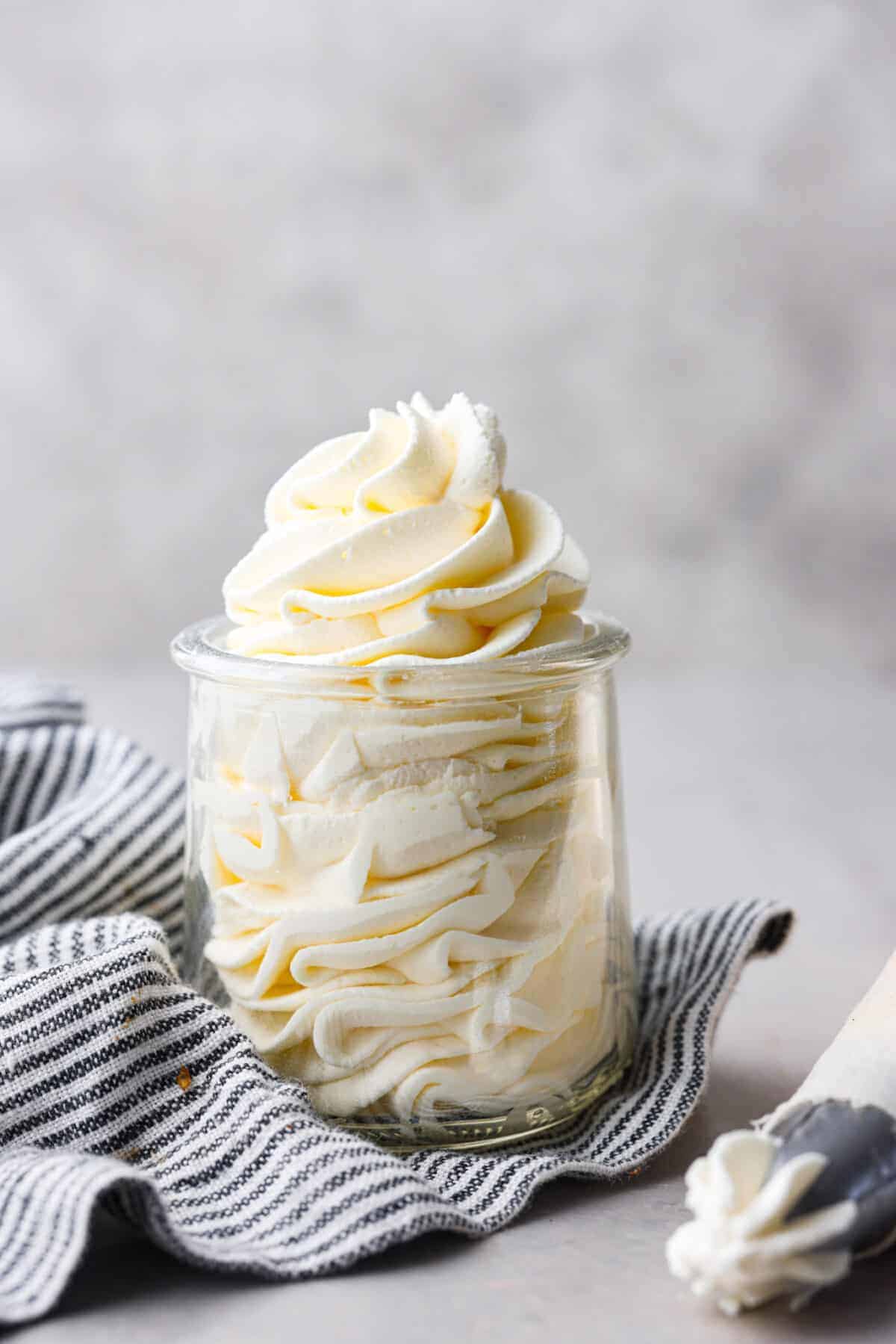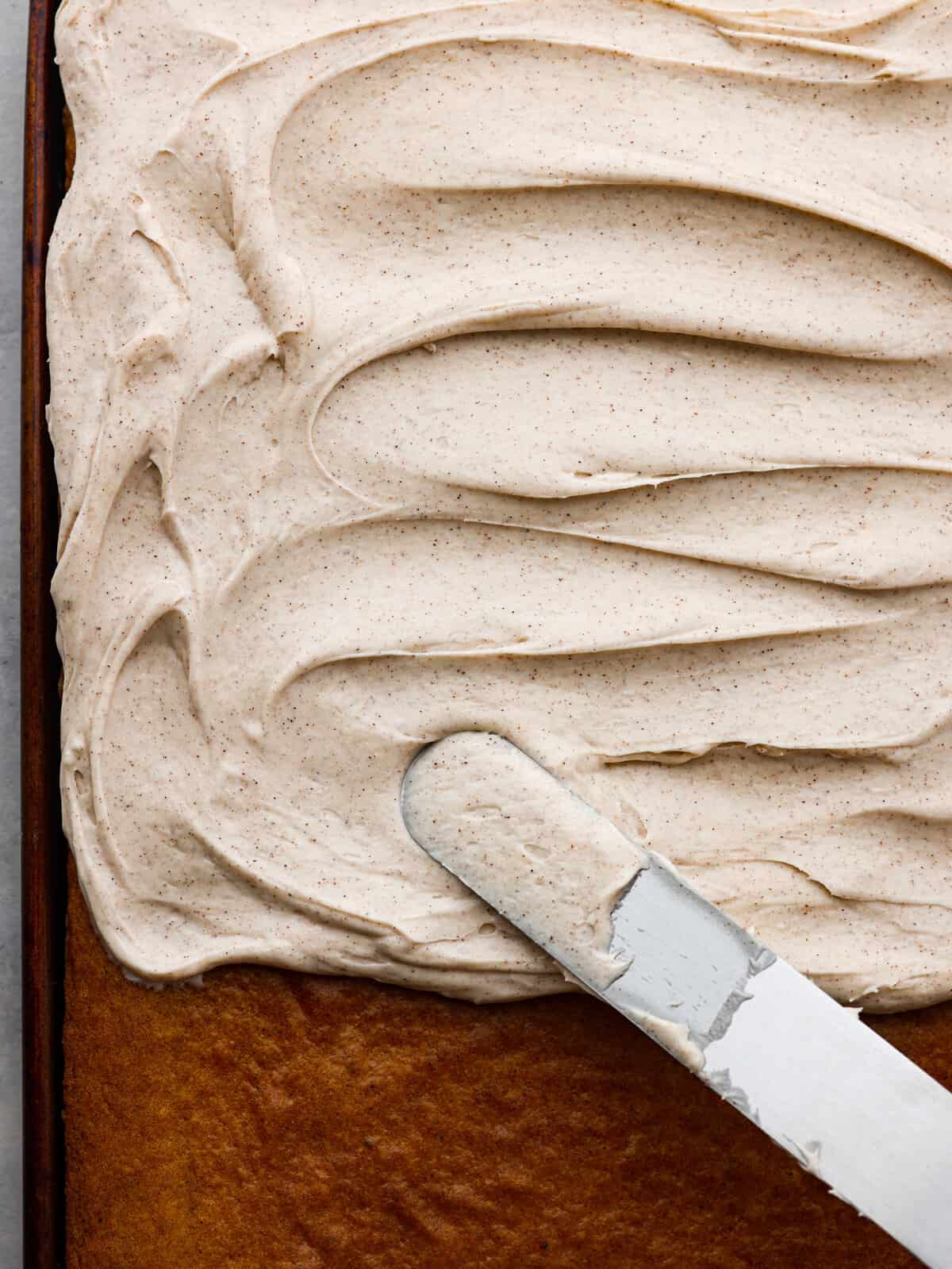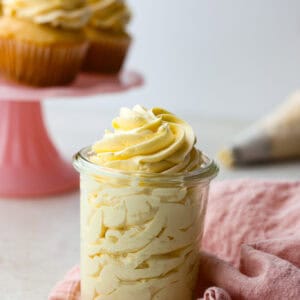For most recipes, you can use French buttercream in place of American buttercream. You could try French buttercream with my white, Lemon blueberry, or lavender cupcakes.
What is French Buttercream?
French buttercream is a rich and creamy frosting made with egg yolks. The egg yolk base lends to its decadent texture and yellow color. Unlike American buttercream, which uses powdered sugar for texture and sweetness, French buttercream uses cooked sugar syrup.
What Ingredients Do I Need to Make French Buttercream?
Take your dessert game to the next level with this silky-smooth French buttercream! Using just a few simple ingredients, you can create a fancy, gourmet twist on the classic buttercream. For exact measurements, scroll to the recipe card at the bottom of the post.
Egg yolks: Egg yolks stabilize the frosting. They also add a rich, creamy, custard-like flavor. Granulated Sugar: When cooked into a syrup, sugar helps emulsify the butter, so it blends perfectly with the egg yolk, creating a rich texture. Water: Used with sugar to cook into syrup. Unsalted Butter: Adds depth of flavor and stability to keep its shape. Salt: Enhances all of the flavors and perfectly balances the sweetness. Vanilla Extract: Provides a warm, inviting flavor. You can substitute for different flavors and extracts.
Steps to Make French Buttercream
Follow these instructions step by step to ensure your buttercream turns out perfect. There is also a tips section below that you can reference if you have any questions!
Swiss Meringue Buttercream uses egg whites mixed with sugar to create a meringue, then combined with butter. The texture resembles French buttercream, but the flavor is less rich. Italian Meringue Buttercream is similar to Swiss buttercream. The difference is you cook the sugar into a syrup and then combine it with the egg whites. It is the most difficult to make but turns out silky smooth with just the right amount of sweetness. German Buttercream uses pastry cream mixed with butter as a base. Its flavor is divine, and its texture is smooth and more custard-like.
Sugar Syrup
Make the Whipped Cream
DON’T overcook the sugar: Do not cook the sugar beyond 240 degrees Fahrenheit! Overcooking causes the sugar to harden when it touches the cooler egg yolks, stopping the yolks from absorbing it. Test sugar doneness: Sugar syrup must be at the soft ball stage. You can test your sugar syrup without a thermometer by dropping a small spoonful into a glass of cold water. If it dissolves, it’s not ready yet. If it hardens, it is overcooked. It is ready if the syrup forms a soft ball, can be squished between your fingers, and remains sticky. Low Speed: To avoid flinging hot syrup, keep your mixer on low when pouring the syrup into the eggs. Butter: The butter should be soft enough to leave an indent with your finger but NOT squish your finger through. Using the incorrect temperature can cause your buttercream to curdle. Refrigerate: If the buttercream isn’t cooling down after adding the sugar syrup, place the bowl in the fridge for a few minutes, then whip it again.
In the Refrigerator: Since this buttercream tends to get soft and melt, keep it at room temperature for only a few hours. Store it in an airtight container in the refrigerator for up to 7 days. In the Freezer: French buttercream stays fresh for up to 3 months in the freezer.Leave it in the refrigerator overnight to thaw completely before softening it and whipping it before use.
Re-fluff instructions: To re-fluff chilled buttercream, let it sit at room temperature for an hour, then whip. You can also half-melt it in a double boiler before whipping.
The Best Buttercream Frosting
25 mins
Chocolate Cream Cheese Frosting
15 mins
Stabilized Whipped Cream
5 mins
Cinnamon Cream Cheese Frosting
5 mins
